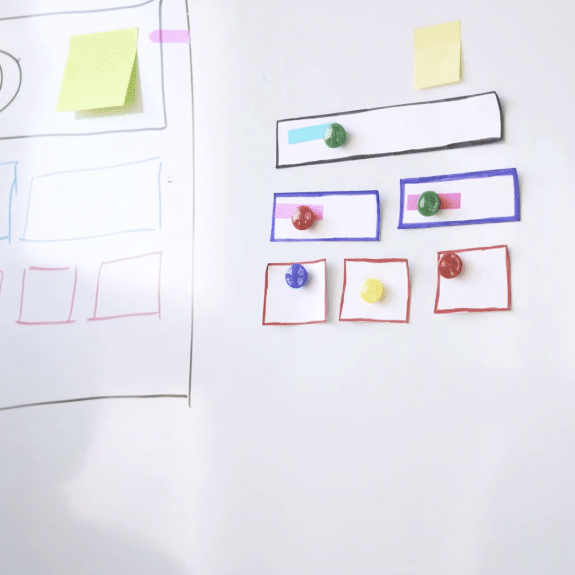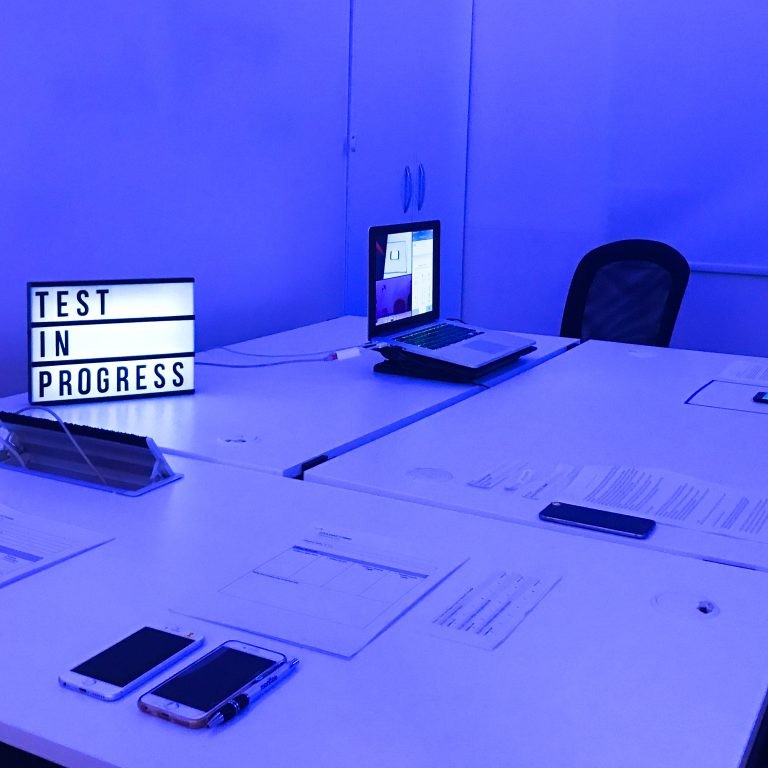How to Turn Your Idea into a Product: Guide for Startups
Let’s say you have a brilliant idea for a new product or a service that you think a lot of people would be willing to buy. But without a credible plan to turn your idea into a marketable product, it is not possible to create a sustainable business. Although people come up with great business ideas every day, it’s the execution that truly matters.
Reading Time: 6 minutes
Don’t miss out the latestCommencis Thoughts and News.
19/07/2019
Reading Time: 6 minutes
Let’s say you have a brilliant idea for a new product or a service that you think a lot of people would be willing to buy. But without a credible plan to turn your idea into a marketable product, it is not possible to create a sustainable business. Although people come up with great business ideas every day, it’s the execution that truly matters.
Don’t miss out the latestCommencis Thoughts and News.
If we think about Uber, Airbnb, Pinterest and Slack; they are all small startups that made it big and are now household names. These are the startup service/product success stories that inspire a new generation of entrepreneurs and founders, who all want to get in on the action!
So, here’s our guide to help you lay the foundations for your idea and turn it into a successful product:
1. Surround yourself with the right team
First things first: assemble your tribe. Surround yourself with people with the right skill set for your product. This can be an employee as well as a mentor who has proven themselves in your field. Or let’s say you’re writing the code for a new mobile app but don’t have strong copywriting or design skills. You’ll need to hire a writer and designer. It’s also important to make sure you’re compatible with your team on a personal level. You want to know you can build great working relationships with them. This will make the hard days (and there will be hard days!) easier on everyone.
2. Choose the right methodology
For your great idea to be efficiently executed, time and budget management should be your top priority at the early stages. You shouldn’t assume that a startup is a smaller version of a large enterprise. You’ll need to carry out the most suitable methodology for your startup, which in this case, would be the Lean Startup Methodology.
Basically, this methodology helps minimise the risks that a startup might face with the help of minimum viable products (MVPs), and reduces time and money wastage. The essence of the Lean Startup methodology is to shorten product development cycles by continuously monitoring the data and measuring how customers interact with your MVP’s features once it has launched.
a. Prepare a business model canvas
One of the key principles of the lean method is preparing a business model canvas, which is a summary of founders’ hypotheses in a framework, instead of preparing a more detailed business plan. This strategic management template illustrates your value proposition, potential customers and finances visually, so you can formulate hypotheses and change your business model accordingly. You can also create other canvases such as the Lean Canvas, Value Proposition Canvas and Mission Model Canvas, and more depending on what is suitable for your product.
b. Focus on customer development to test the hypotheses
After you have created your business model canvas, continue learning about your prospective customers and their problems at the early stages. It is crucial to acknowledge that defining your target audience is no longer as simple as defining their age, gender, location, interests and lifestyle habits. You need to be human-centric in every step of your product development. Therefore you need to also adopt Persona Spectrums, which focus on the specific use cases of ability, circumstances, accessibility and potential user motivation, and create scenarios accordingly. You can practice customer development in 4 steps as Steve Blank–the developer of the method–suggests below:
- Customer discovery: tests hypotheses about the problem, interest in the product, and viability of the business.
- Customer validation: tests hypotheses about customer purchases and enables you to create a sales roadmap accordingly.
- Customer creation: implements the business plan by scaling through customer acquisition, creating customer demand and directs it to the sales channels.
- Company building: shapes and standardizes company departments and operations.
c. Incorporate an agile development: Build-measure-learn
As you receive great insights on how to improve your product, what customers expect from your product, and its ease of use, you will have the opportunity to tweak your product until your customers are pleased with the result.
During this time, you should implement the “build-measure-learn” model, which is basically a learning cycle. This is performed on a repetitive basis with the purpose of developing your MVP into a sustainable business through continuous optimisation. Accelerating this feedback circle means that you don’t waste any valuable time building a solution that doesn’t actually fit the needs of customers.
3. Build
Simply put, this step refers to building an MVP. It’s important to note that your MVP is not the final product but with fewer features. Instead, it’s the simplest thing that you can present to customers to get the most feedback at that moment in time.
It’s important to be quick when you are building your product, especially as we’re operating in a fast-paced world of endless consumption. This is where rapid prototyping comes into play. Rapid prototyping is an iterative process that envisions what a website or an application will look like in order to get feedback and validation from users and your team. It helps teams to quickly discover and validate their ideas.
A prototype doesn’t have to be fully functional. What matters is that it looks real enough that potential users can interact with it and leave feedback. Rapid prototyping allows teams to make changes based on real-world customer feedback, all without spending resources on assumptions and untested concepts. It’s rapid because the initial prototype can be produced quickly, feedback can be gathered quickly, and iterations can take place quickly.
It’s never going to be perfect the first time.
Here are some steps to follow when developing your prototype. By addressing each of these points now, you’ll be laying down a solid foundation for your new product development process.
UX and UI: UX is short for user experience and UI stands for the user interface. UX is how the customer interacts with your product or service, whereas UI are all the elements that enable your customer to interact with your product or service. It’s important to apply UX and UI thinking to your prototype, as it ensures your product or service can meet your user’s requirements while being simple and easy to use.
Mockups: Mockups are a visual representation of what you want your finished product to look like. It helps bring your idea to life, particularly for those outside your startup and unfamiliar with your vision. It’s worth investing in professional designers to render your mockup for you, as it can be a crucial factor of buy-in from potential customers or investors.
And don’t forget the patent: Consider whether you need a patent to protect your idea. There are two types of patents: utility (safeguards the function of your product) or design (cover the aesthetics of your product). You can even check online to see if your idea hasn’t already been patented by someone else. If not, and you want to patent your idea now, then it’s best to contact a patent attorney for legal advice.
In the meantime, keep all documentation that demonstrates that you were the first to conceive of your product or service. This includes all notes, sketches and prototypes.
4. Measure
The harsh reality is that just because you think your idea is great doesn’t mean other people are going to agree. The only way you’ll find out is by listening to your customers and measuring your product or service’s effectiveness in the market. Running surveys, interviews and focus groups, as well as enlisting beta testers of your product or giving out free samples, are the most common ways to gain feedback. It can be as informal or as formal as you like, as long as you’re getting out there and validating your idea with the target audience.
Make sure to ask your potential customers what they’re looking for and what they’re willing to spend money on. Their honest feedback is important and will help improve your product or service.
5. Learn
Optimisation comes with learning. The objective of this step is to maximise learning through iteration. This learning can be about customer needs, product features, the right pricing, the right distribution channel, and more. Here, you will be deciding whether to persevere or to pivot the idea. Validating your idea will give you the confidence to move forward with your business. However, if you’re receiving negative feedbacks, use this data to adjust your product to fit your target market’s needs.
All in all, create MVPs and immediately get customer feedback. Then, based on the input received by the customer, start the loop again, test redesigned offerings and make changes to ideas that don’t work.
Note: During the market analysis, it’s important to ensure your idea isn’t infringing upon someone else’s copyright or intellectual property. If you have an invention that you’re bringing to market for the first time, make sure you look at patent protection for your idea (refer back to our recommendations on patenting above).
Conclusion
There’s a long way between an idea and an established product. Bringing a new product or service into the world requires a lot of initial investigation and research, as well as long-term patience and resilience. We know it’s not an easy road to walk. There’s blood, sweat and tears (good and bad) behind any successful startup.
However, if you’re prepared to knuckle down and get to work, and you’ve followed the steps outlined in this guide, we know you’re ready to turn your business idea into a successful product.
What steps have you taken to turn your idea into a project?



